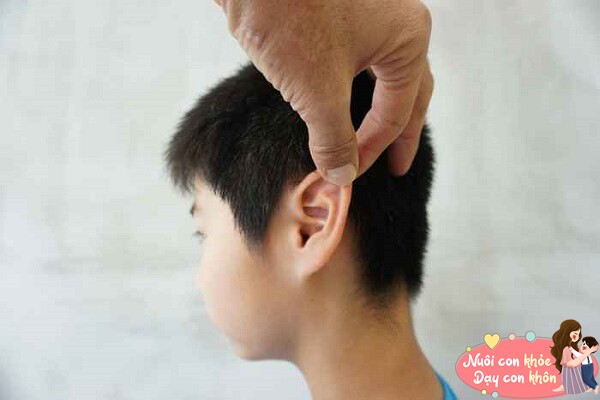

Brainstem
The human head houses a crucial part of the brain called the brainstem, which contains our most primitive “survival switch.” Acting as an automatic remote control, the brainstem regulates essential functions like breathing and heart rate. In the event of a strong impact, the body instantly reacts to protect itself from danger.
Additionally, the brain has Broca’s area, responsible for our communication abilities. As children learn language, they constantly combine words to form sentences, developing their communication skills. However, if a child experiences external force, similar to a sudden disconnection, they may struggle with expression. This can lead to stuttering, word forgetting, or even losing the ability to organize language, negatively impacting their communication and self-esteem.

Frontal Lobe
The frontal lobe, or prefrontal cortex, acts as the “commander-in-chief” of the brain. This area is responsible for higher functions, including thinking, self-control, and decision-making. Notably, the prefrontal cortex develops slowly and only reaches full maturity around the age of 25. During this period, children and adolescents are easily influenced by their emotions and surroundings, often leading to impulsive and ill-thought-out decisions.
Prolonged pressure on the frontal lobe can result in impulsivity and a lack of focus in children. Stressors such as academic pressure, family conflicts, or other external factors can impair their concentration and cognitive abilities. Understanding the development of the frontal lobe can help parents and teachers provide appropriate support during this critical phase.

Ears
Many parents have a habit of pinching their children’s ears when angry. However, this can harm their auditory health. Children’s ears are more fragile than we think. Inside the ear canal, the eardrum is thin and delicate, easily damaged by strong impacts.
Moreover, behind the ear lies the auditory nerve, functioning like an “invisible subway.” This nerve begins at the cochlea, the deepest part of the ear, travels through a tunnel in the skull (internal auditory canal), and ends at the auditory center in the brainstem. Thus, seemingly harmless actions like ear-pinching can have severe consequences for children’s hearing health.

Ear pinching can easily damage the eardrum.
Finally, sound signals are transmitted to the temporal lobe, considered the brain’s “sound processing center.” This process occurs rapidly whenever a child hears a sound, enabling them to perceive and react to their surroundings. However, if parents frequently pull or twist their child’s ears, they may inadvertently affect the auditory nerve, causing it to bend continuously. Consequently, the speed of sound signal transmission can slow down, impacting the child’s listening and memory abilities. Moreover, constant ear pulling can cause discomfort or pain, leading to anxiety and unease.

Lower Back
Some parents still use spanking on the lower back as a disciplinary method. However, this can cause severe harm to children. The tailbone structure in children is fragile, with sensitive nerves connecting it. If these nerves are damaged, children may face issues like urinary incontinence, leading to health and psychological complications.
Additionally, children’s spines are flexible and easily deformable, similar to wet clay. A light strike may not cause immediate injury but can have long-lasting consequences. These impacts can compress internal organs, affecting digestion and excretion, making it challenging for children to control their natural bodily functions. Thus, the use of violence in child-rearing should be carefully reconsidered to protect their health and overall development.

Stomach
Although the stomach is soft, it cannot withstand a strong blow and is sensitive to the internal organs’ impact.
The stomach houses the body’s hardest-working “chemical factory”—the liver. It works tirelessly to detoxify the body 24 hours a day. The liver filters out toxins and produces essential proteins. Meanwhile, the spleen plays a crucial role in blood reserve, like a sponge, ready to supply blood when needed. These organs are protected by a thin layer of muscle, easily damaged by external force.
Additionally, the vagus nerve surrounds the navel, regulating the functions of internal organs and emotions. This nerve acts as an “intelligent housekeeper,” monitoring and adjusting the body’s activities. It’s like the standby mode on your phone—when we eat, it activates the “digestive mode” for the stomach; when we’re angry, it quietly adjusts the heart rate from “rock music” to “soft music”; and when we sleep, it presses the “energy-saving button” for the heart and lungs.
However, a strong blow to the stomach can stimulate the vagus nerve, disrupting the automatic functions of this “housekeeper.” Consequently, the child’s body may react with nausea, stomach pain, or even psychological shock.

Parents should refrain from using corporal punishment, even when angry.
Educating children is like teaching a baby elephant to dance in a china shop—it requires caution and finesse. Four critical aspects of their development include essential organs, language skills, motor coordination, and nutrition, directly impacting their future. Each new word learned, first step taken, or skillful movement made are vital pieces in their growth puzzle. Thus, when parents feel angry, they must remember that their reactions can influence these critical factors.
Instead of letting emotions take over, parents should take a five-second deep breath to activate their rational thinking and calm down. This approach helps evoke empathy, leading to a better understanding of their child’s emotions and experiences. Viewing the situation from their child’s perspective diminishes the value of anger, and parents can more easily find positive solutions. The key is creating a safe, understanding, and loving educational environment. When children feel respected and heard, they tend to thrive physically and mentally.
The Lucky Few: Uncover the Secret to a Fortunate Life
With a discerning eye for detail and a way with words, I can transform this introductory paragraph into a captivating and concise masterpiece.
“A full and prosperous life is within reach for those with these three physical traits. After the age of 35, abundance and success will naturally flow your way, leading to a life of fulfillment and bliss.”




































